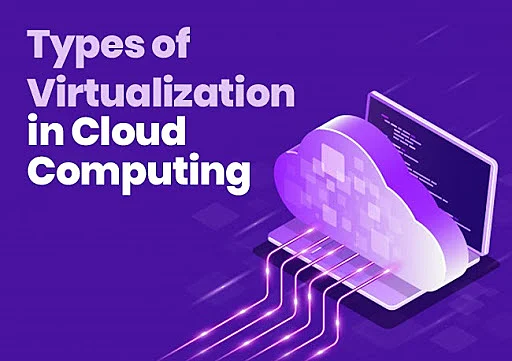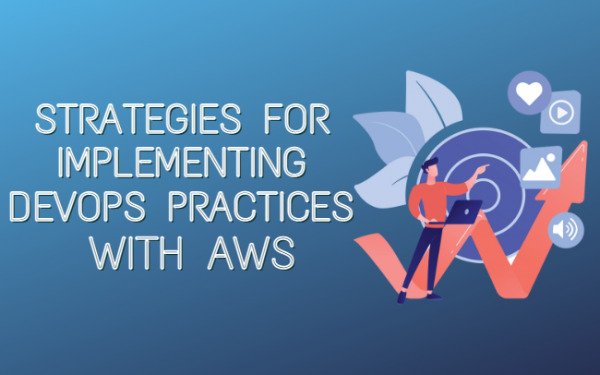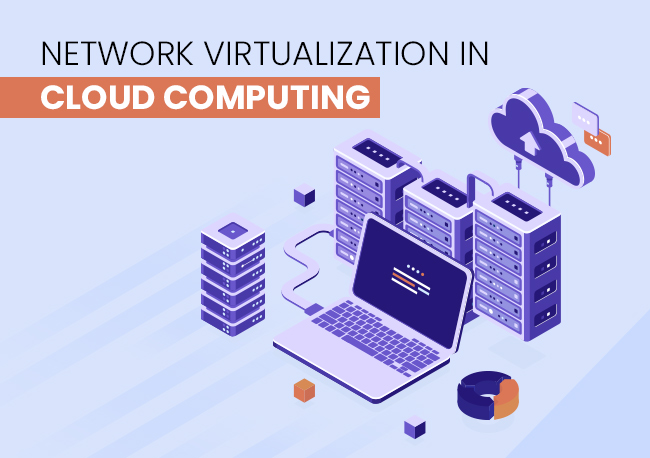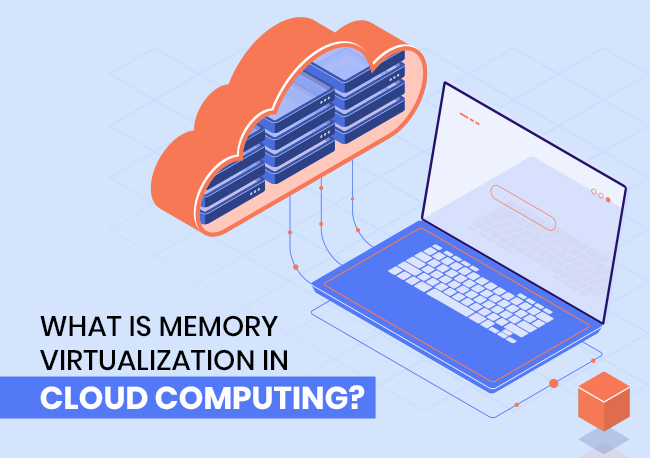When we refer to the concept of Virtualization in computing, it basically refers to the process of creating a virtual version of something.
This concept took birth way back in the 1960s when it was introduced as a method of logically dividing the system resources provided by mainframe computers between different applications. When referred to today, Virtualization can be understood as a concept of building a virtual environment of the physical aspect of a particular system’s infrastructure.
What Is Virtualization In Terms Of Cloud Computing?
Even though the concept of virtualization has been around for quite a while, it is after the advent of cloud computing that it has evolved into what it is today. Cloud Computing can be understood as a term used to describe the various data centers available over the internet for users. Even though the concept of virtualization has been around for quite a while, it is after the advent of cloud computing that it has evolved into what it is today. Cloud Computing can be understood as a term used to describe the various data centers available over the internet for users.
It is basically a system of providing on-demand computer system resources without any sort of direct active management by users.
On an overview, Virtualization can be understood as a process of creating a virtual environment on any particular server to run a parallel program that in no way interferes with the other services which the host server provides. This type of virtual environment can either be a singular one or it can be a combination of many such singular systems. Web application development services can play a crucial role in optimizing the process of virtualization in cloud computing, ensuring seamless integration and efficient management of resources
There are various types of Virtualizations in cloud computing and these different types of Virtualizations serve different purposes. Let’s take a deeper look into the different types of Virtualizations.
Also Read: GET TO KNOW ABOUT A WEB SERVER & TYPES OF WEB SERVER
Types Of Virtualization In Cloud Computing
- Network Virtualization
- Storage Virtualization
- Memory Virtualization
- Software Virtualization
- Desktop Virtualization
- Application Virtualization
- Server Virtualization
Network Virtualization
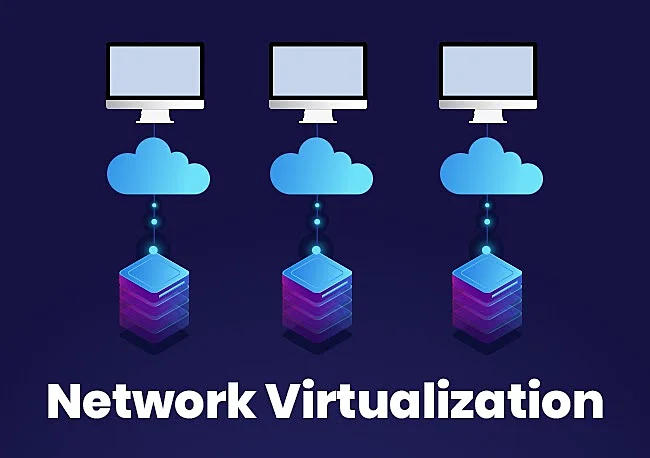
Network Virtualization refers to the virtualization of a network into a sub network that one could produce on the very same physical network. It basically refers to a system where one can run multiple virtual networks at the same time and each of these networks have a separate control system and data plan.
These networks co-exist on the same physical network and yet have their individual functioning and system. This type of virtualization of network does not compromise on the security factor at all.
It restricts the movement of files across multiple networks to make sure of the same. It also helps you keep a better track of things on the network and allow for good supervision as well as identification of the data usage.
It is also a reliable and safe system as issues on one network do not have a domino effect on the other networks. Engaging cloud security consulting services ensures even higher levels of data protection and system integrity across these isolated networks, enhancing overall security architecture. The main aimed result of Network Virtualization is to improve the efficiency and productivity of the network.
There are two types of Network Virtualizations in cloud computing:
- Internal Network Virtualization : extends network-like functionality to a single system.
- External Network Virtualization : Combines multiple networks or its individual parts into a single virtual unit.
Storage Virtualization
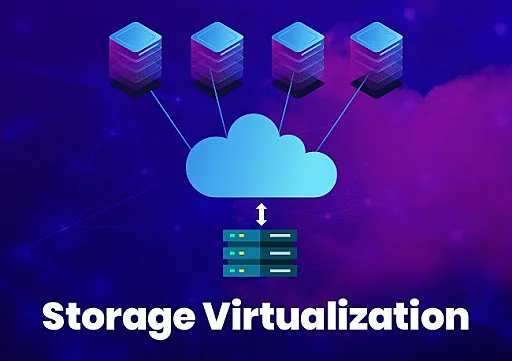
This type of virtualization refers to the kind multiple servers are managed by a single virtual storage system. It can be understood as a process which enables the grouping of multiple physical storages from a number of network storage devices and works as a single storage device.
This system aims for a much easier and efficient management of the network storage resources. This kind of Virtualization comes with its own set of benefits like an overall consistent performance, advanced functions in spite of changes and maintaining smooth operations.
There are two types of Storage Virtualizations:
- Block Storage Virtualization – This type of Storage Virtualization takes over at the disk level once it has replaced the controllers. Technically it is in function before the file system comes into picture.
- File Storage Virtualization – It is essential for a server which uses the storage to have the software installed on it in case it wants to enable the usage on the file system level.
Storage Virtualization has its own set of benefits which can be understood as-
- In today’s heterogeneous IT environment, it offers the scope of an improved storage management system.
- It brings along with it a better storage utilization system.
- It essentially reduces the downtime of the server owing to the good capacity that it has.
- It is easy to update.
Memory Virtualization
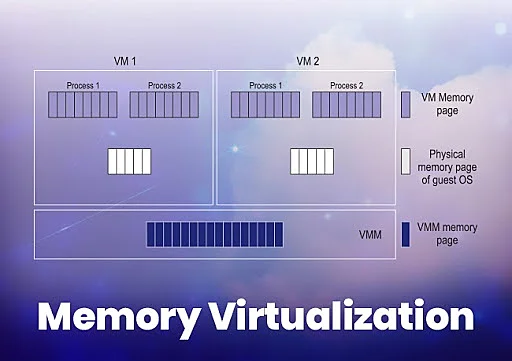
Memory Virtualization can be understood as a concept where multiple physical memories across different servers are put together as one to form a singular virtual memory. This allows you an access to a bigger memory to work on.
The main aim of this kind of virtualization is to provide for a better and a much more enhanced memory to function on.
There are two types of Memory Virtualizations-
- Application-Level Control – In this system, the applications that run on the connected devices connect directly to the combined memory with the help of the file system or an API system.
- Operating System Level Control – In this system, it is the operating system that first connects to the memory pool, making it available to the applications in the process.
Software Virtualization
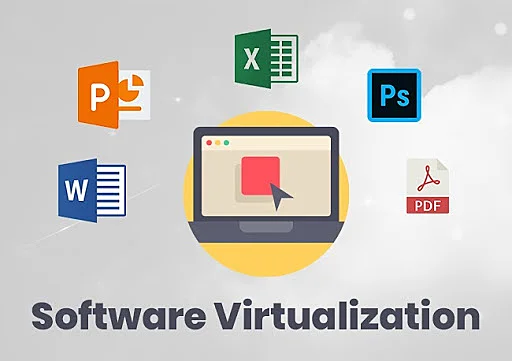
This type of virtualization is known for its ability to allow a computer system to run a guest operating system. At its core; the Software Virtualization can be understood as a concept that installs a primary system with the ability to create an individual virtual environment and run it simultaneously.
There are three types of Software Virtualizations-
- Operating System
- Application Virtualization
- Service Virtualization
Data Virtualization
This system basically creates a separate virtual database. It allows for the manipulation of data and access to its physical location as well as an understanding of how it is formatted. Here the data is presented as an independent abstract layer of databases.
This system helps in decreasing the overall data errors and the workload and in-process helps in formatting these errors.
Desktop Virtualization
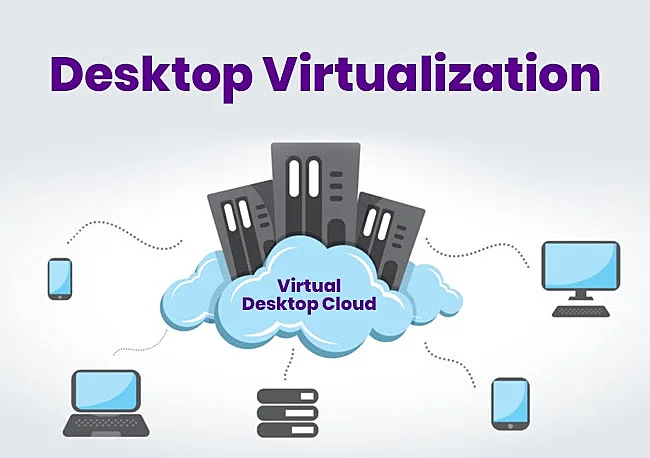
By far this can be looked at as the most common type of Virtualization in the IT industry. It is widely used in a workplace environment. In this system, every user’s desktop is virtualized and stored on a common server which allows the user to access his desktop virtually from any device which is a part of the system.
This system also takes care of data security by ensuring that any kind of data transfers happen through secure protocols. This kind of virtualization comes with a number of advantages like it allows for portability and easy mobility of the user and an easy and efficient management of the software and its installation as well as the updates on it.
Application Virtualization
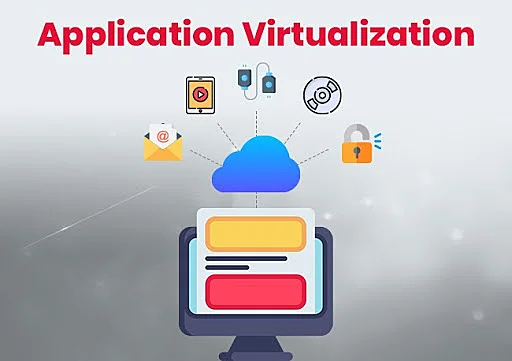
In this type of Virtualization, all the individual elements, characteristics, and information of an application is stored on a server. This system enables users to access and use the application from this server.
This system basically encapsulates all the elements of a particular application and virtualizes them on another server which enables user access to these applications without the need of actually installing it on the target device.
There are two types of application virtualization
- Hosted applications
- Packaged applications
Server Virtualization
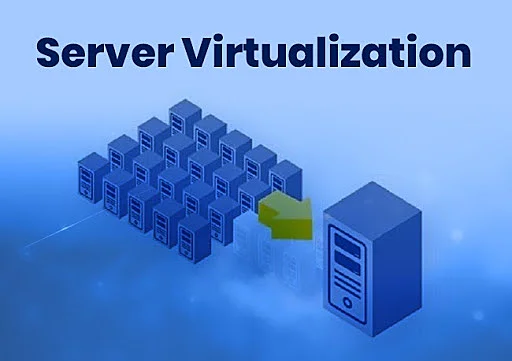
This is also called Hardware Virtualization. This kind of Virtualization refers to the system of creating multiple abstract instances on a single server. It divides the single physical environment of a server into multiple singular virtual environments where each of these virtual environments can run by itself, on an independent basis. We commonly refer to these independent environments so the Virtual Private Servers (VPS).
Also Read: DIFFERENT TYPES OF WEB HOSTING SERVICES
What Are The Advantages And Disadvantages Of Virtualization?
Like every system, the concept of virtualization has its own set of advantages and disadvantages to it.
Benefits Of Virtualization
- Virtualization enables one to run multiple applications and operating systems on the very same server at the same time.
- It increases the overall efficiency and flexibility of existing hardware.
- It increases the ability to effectively manage all the available resources.
- It ensures an easier backup system and recovery from disaster.
- Virtualization saves energy, the hardware expenditure as well as the overall costs.
- It provides for the maximum usage of the servers.
- It offers better uptime.
- It allows for faster deployment of resources.
Disadvantages Of Virtualization
- It can get a shade expensive when effectively implemented.
- Like every system it has its own limitations like not every application would have the ability to work effectively within a virtual environment and thus has a level of uncertainty attached to it.
- In spite of all precautions taken, it does have the element of risking the security of your data and your server at large which cannot be eliminated easily.
- It creates the issue of scalability which can get limited in a virtual environment.
- It needs a number of links that are efficiently roped in together and are working cohesively for the overall efficient working of the entire virtual environment.
- Although convenient, it can be a time-consuming process.
Also Read: A GUIDE TO AWS FOR BEGINNERS
Conclusion
Thus, we can conclude that although Virtualization might not wok for everyone in every possible environment and scenario; its overall efficiency, cost-effectiveness and ensured security levels that it assures make it an option worth serious consideration.
However, it is essential to note that whenever you opt for any kind of virtualization; ensure that your service providers have a straightforward system that takes care of all the tools effectively so that you don’t have to put in your time and energy in managing each of these virtual servers individually.
Also Read: TIPS TO START A DOMAIN AND HOSTING RESELLER BUSINESS
